All products featured are independently chosen by us. However, SoundGuys may receive a commission on orders placed through its retail links. See our ethics statement.
Google Pixel Buds Pro 2 vs Bose QuietComfort Earbuds (2024): Top-tier tussle
October 2, 2024



We’ve been absolutely slammed by new earbud releases in late 2024, so you could be forgiven for missing one. But when Bose and Google update their lineup, who wins when we pit the Google Pixel Buds Pro 2 vs Bose QuietComfort Earbuds (2024)? Let’s listen to find out.
Editor’s note: this article was published on September 27, 2024, and is the first version of the article. Updates will follow as the market changes.
What’s it like to use the Google Pixel Buds Pro 2 compared to the Bose QuietComfort Earbuds (2024)?
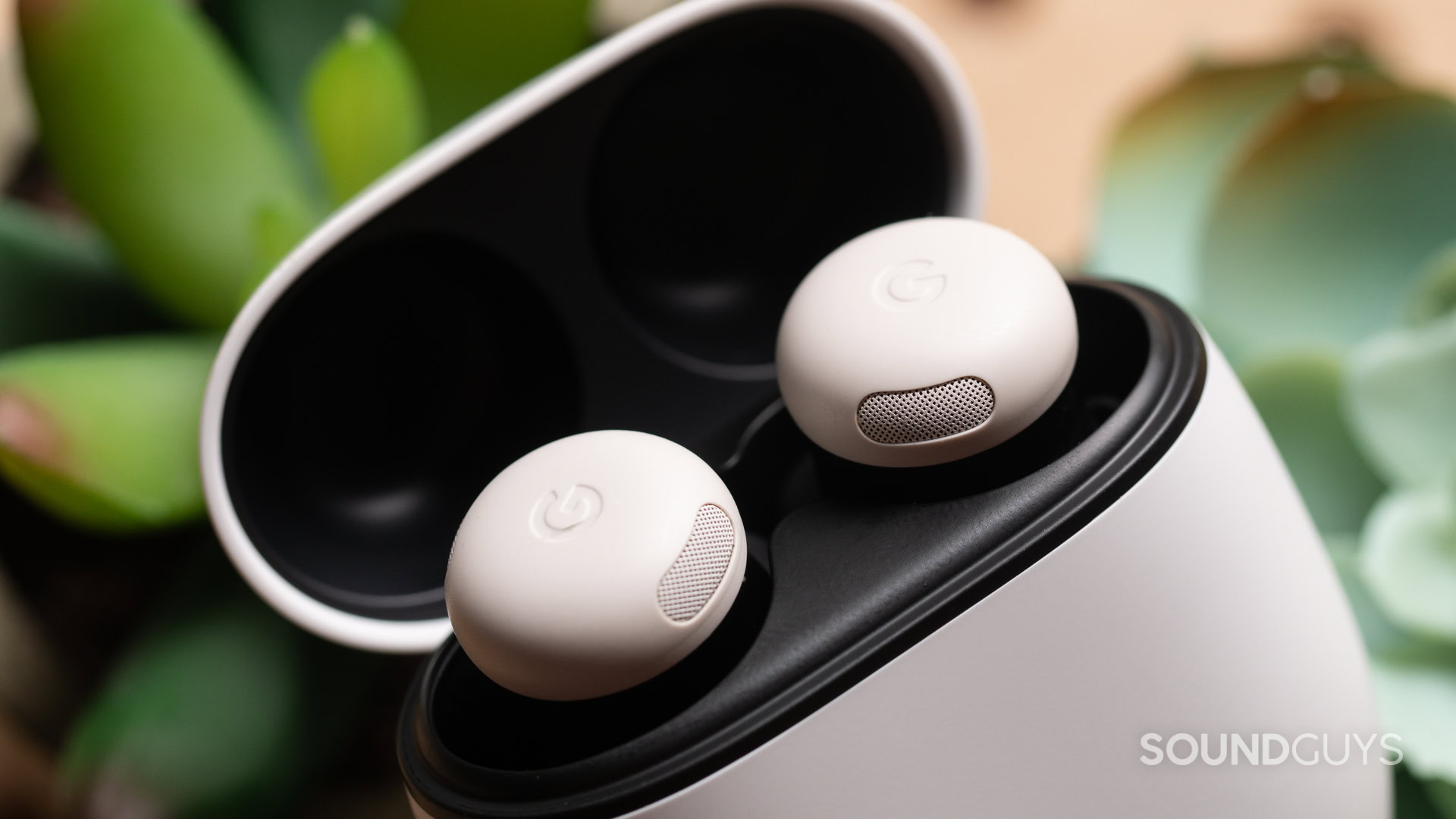
In short, the Google Pixel Buds Pro 2 are Google’s halo earbuds, packed with the latest and greatest feature the company wants to incorporate into its Pixel ecosystem. Inside is a considerable amount of new silicon that promises dedicated lanes for ANC and audio processing, allegedly making the earbuds less prone to bottlenecks. The earbuds themselves are quite small, and have a small semicircular concha fin to stabilize the fit. We found these to be comfortable, but those of you with larger heads and ears might find the fit to be difficult. Currently, there are limited third-party eartip options for both models.
On the other hand, the Bose QuietComfort Earbuds (2024) are quite large, and will not fit small ears easily. If you’re worried that the Google Pixel Buds Pro 2 is too small for your ears, the Bose QuietComfort Earbuds (2024) is a safer bet for you. These earbuds also feature an ovoid nozzle, which tends to fit the ear canal a bit better than a more traditional cylinder design. The earbud uses an almost free-floating rubber ring to hold the outer edge of the earbuds in your ear, which can sometimes get dislodged.
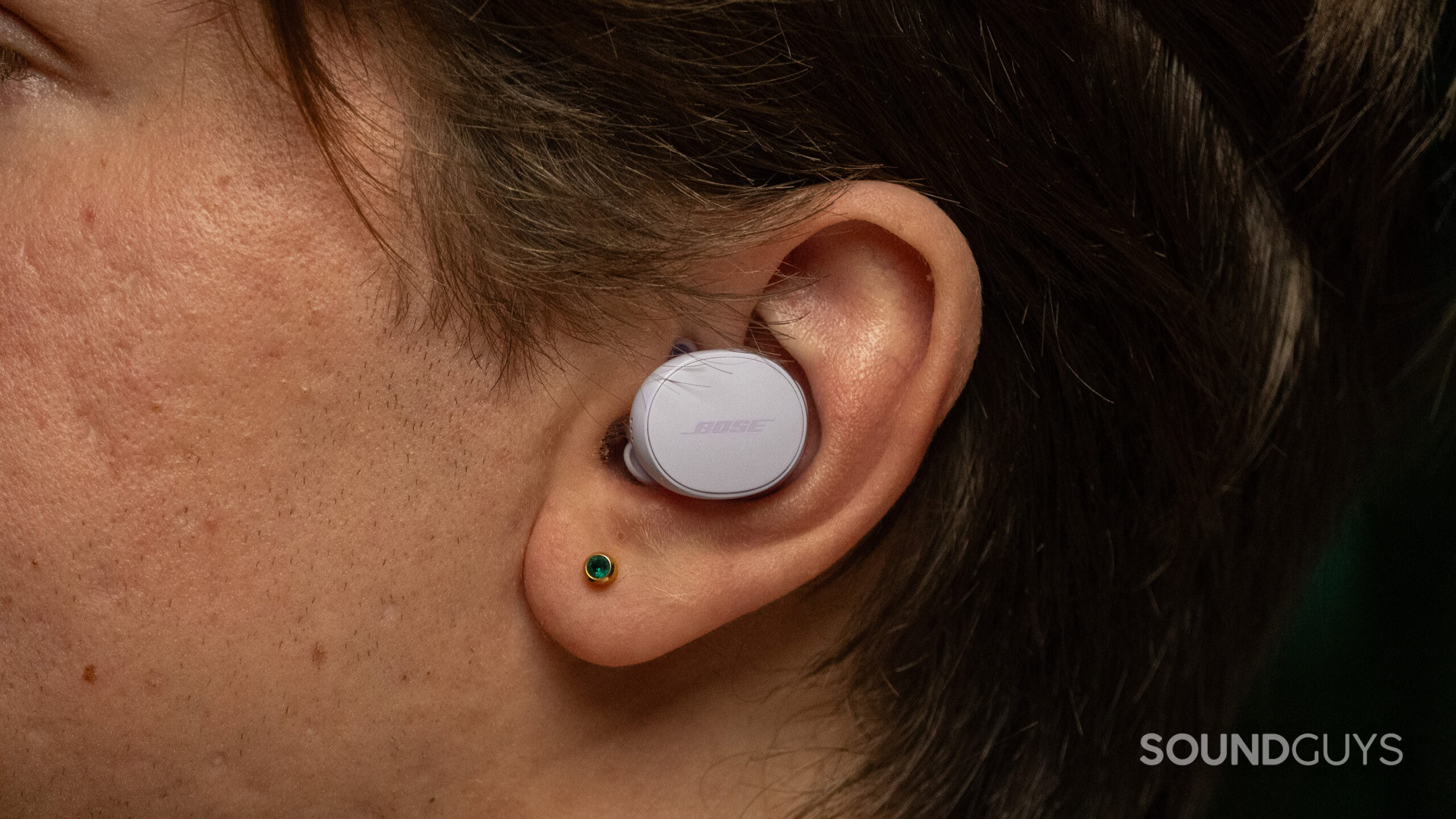
Both the Google Pixel Buds Pro 2 and Bose QuietComfort Earbuds (2024) boast a similar ingress protection rating of IP54 and IPX4 respectively, and should be good for workouts, or incidental rain. Don’t take these into the shower, however.
Controls for the Google Pixel Buds Pro 2 are accomplished with a series of taps on the back of the capacitive plates of the earbuds:
| Input (either earbud) | Music | Phone |
|---|---|---|
| Input (either earbud) One tap | Music Play / Pause | Phone Answer call |
| Input (either earbud) Two taps | Music Next track | Phone Reject call |
| Input (either earbud) Three taps | Music Previous track | Phone |
| Input (either earbud) Tap and hold | Music Toggle ANC/transparency modes | Phone |
| Input (either earbud) Swipe forward | Music Volume up | Phone Volume up |
| Input (either earbud) Swipe backward | Music Volume down | Phone Volume down |
| Input (either earbud) "Hey, Google" | Music Voice your request or inquiry | Phone |
Like the Google Pixel Buds Pro 2, controls for the Bose QuietComfort Earbuds (2024) are accomplished with a series of taps on the back of the capacitive plates of the earbuds:
| Input | Left earbud | Right earbud |
|---|---|---|
| Input Single tap | Left earbud Play/pause, answer call | Right earbud Play/pause, answer call |
| Input Double tap | Left earbud Skip, end call | Right earbud Skip, end call |
| Input Triple tap | Left earbud Previous track | Right earbud Previous track |
| Input Tap and hold | Left earbud Decrease volume | Right earbud Increase volume |
Should you use the apps of either Google Pixel Buds Pro 2 or Bose QuietComfort Earbuds (2024)?
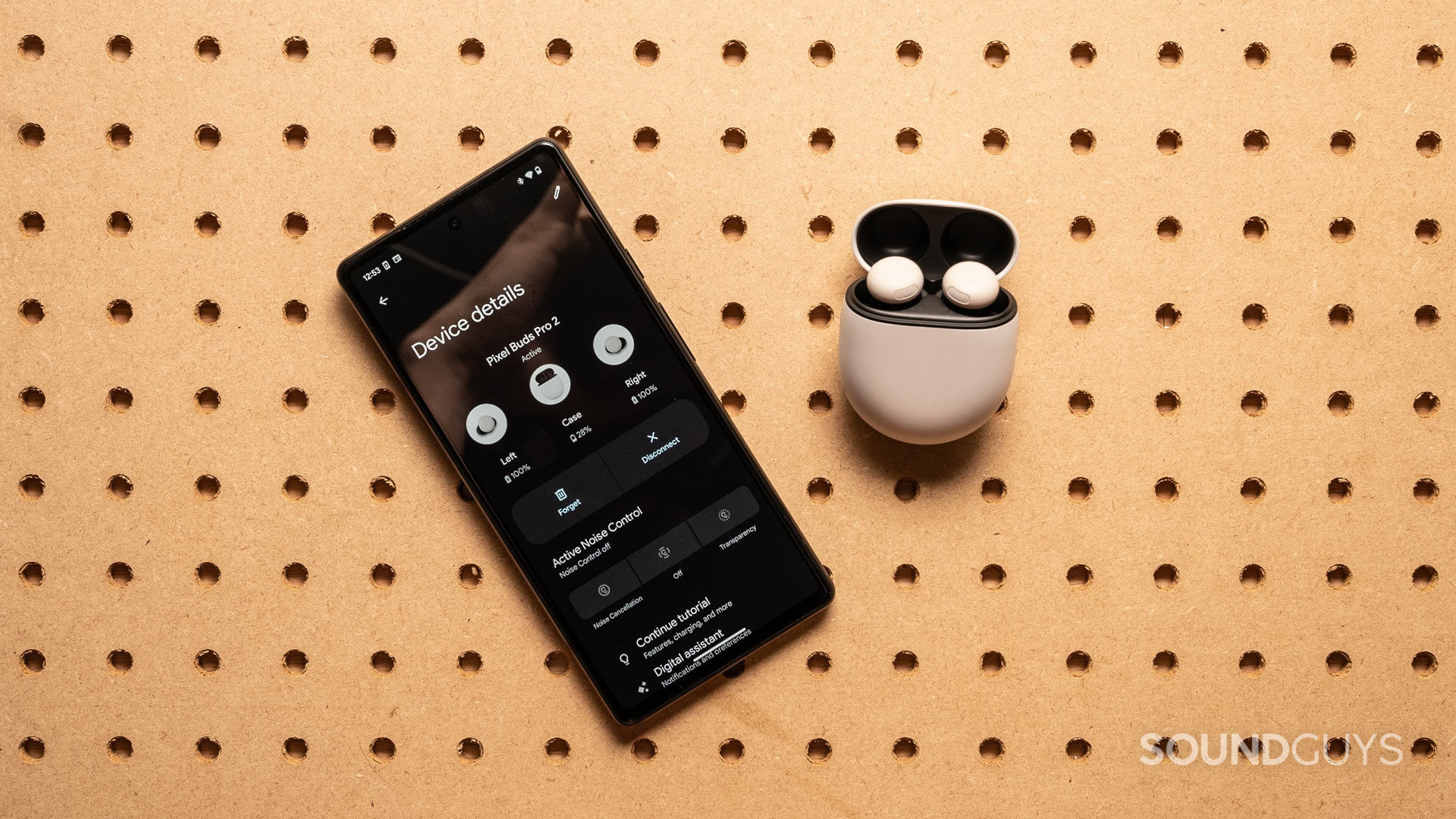
Unlike the Bose QuietComfort Earbuds (2024), the Google Pixel Buds Pro 2 does not require you to download or use an additional app, as the software for changing settings is baked into Android. Though there are a few Pixel phone-specific features that you won’t be able to use without a Pixel 7 (Clear calling), Pixel 8 (Super wideband calling) or newer.
The Bose QuietComfort Earbuds (2024) on the other hand, has a brand new app that allows you to handle firmware updates, EQ changes with a 5-band slider, and more advanced controls. Personally, I found this app to be a little slow, but on the whole it’s nice to have everything laid out on one screen so you don’t have to hunt for anything. Despite its rough edges and sharing data with Bose, you’re probably going to want to use this app for your daily use, even if only to stay on top of firmware updates.
How do the Google Pixel Buds Pro 2 and Bose QuietComfort Earbuds (2024) connect?
Both products connect to their source devices over Bluetooth, but the Google Pixel Buds Pro 2 uses Bluetooth 5.4 with AAC, SBC, and Opus, while the Bose QuietComfort Earbuds (2024) uses Bluetooth 5.3 with AAC and SBC. Though many might bristle at the lack of higher-bitrate codecs, that’s really not that big of a problem any longer.
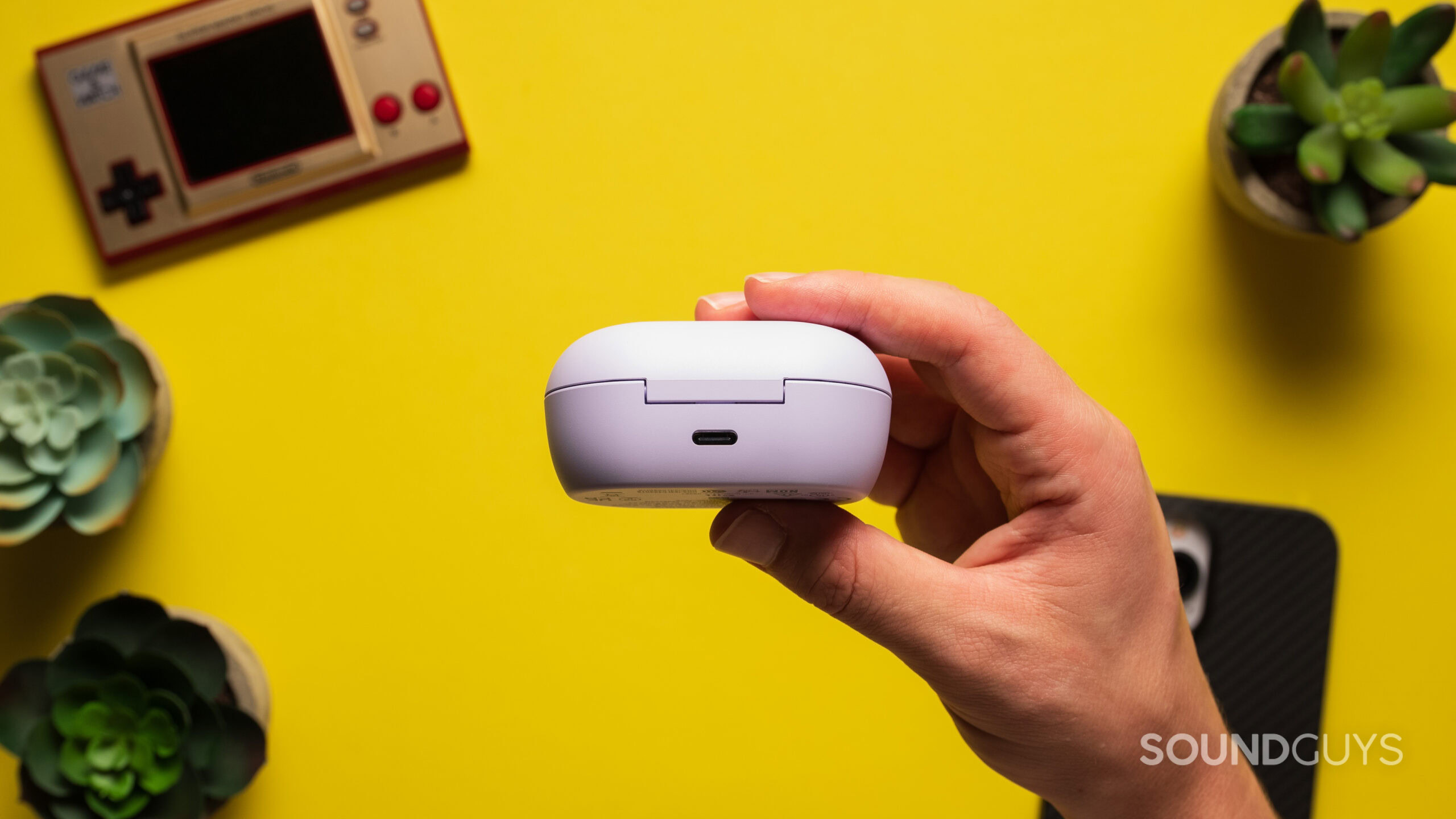
Both sets of earbuds support Bluetooth Multipoint, but I had one hell of a time keeping the Bose QuietComfort Earbuds (2024) connected to either source device when doing this. Though you’re unlikely to run into many issues, the Bose QuietComfort Earbuds (2024) would often disconnect in our labs while running tests with the test head, so there are some things we can’t say for certain about its overall connection. We’re unsure if the issue is the fact that a dummy head is what’s listening to the earbuds, or some other setting that’s inaccessible through the app telling the earbuds to kick off.
Is battery life better on the Google Pixel Buds Pro 2 or Bose QuietComfort Earbuds (2024)?
Though both earbuds allege a decent battery life, we only have the figures for the Google Pixel Buds Pro 2, due to the issue highlighted in the previous section. However, the Google Pixel Buds Pro 2 was able to last our standardized process for 7 hours, 55 minutes. The Bose QuietComfort Earbuds (2024) is advertised to last 8.5 hours, but we haven’t been able to confirm that figure. In our subjective experience, though, the earbuds are more than capable of lasting more than a commute, for whatever that’s worth.
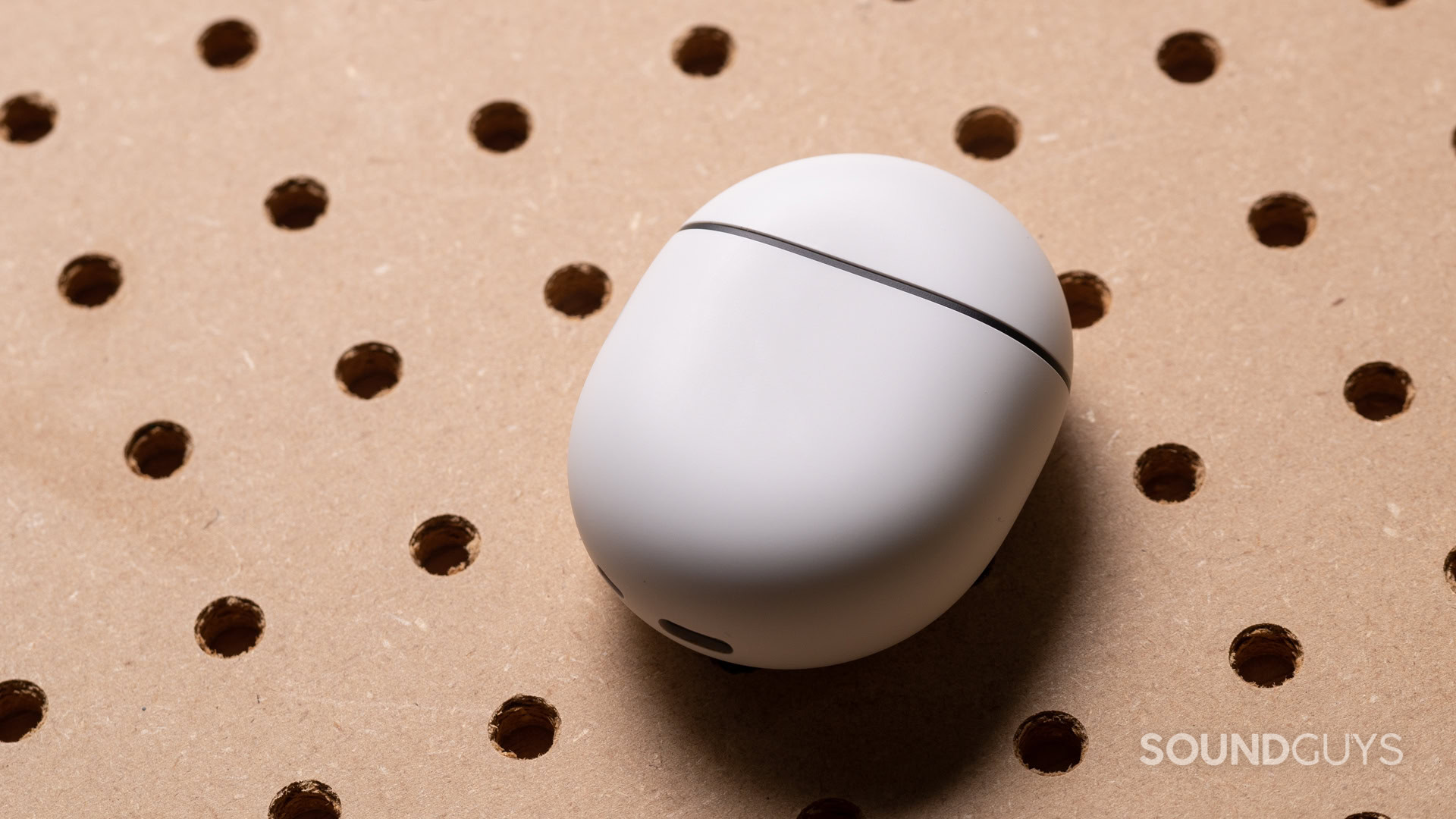
A long battery life could hardly ever be a bad thing, and can impact how long your earbuds last. To that end, it’s also a good thing that both sets of earbuds have wireless charging, as USB-C ports can sometimes lose their efficacy. For example, if the solder breaks, lint gets impacted in the port, or pins get corroded.
Do the Google Pixel Buds Pro 2 or Bose QuietComfort Earbuds (2024) block noise better?
Both models of earbuds perform similarly well when canceling noise, though The Bose QuietComfort Earbuds (2024) does isolate highs a bit better. Because each model is sealed to the ear canal, adding ANC on top of that results in a high degree of overall noise attenuation.
Loading chart ...
The Google Pixel Buds Pro 2 is no slouch by any means, and can hush outside noise above 100Hz by anywhere from 15-35dB, frequency depending.
Loading chart ...
Similarly, the Bose QuietComfort Earbuds (2024) offers a comparable level of noise attenuation, though it is a bit better in the highest octaves than Google Pixel Buds Pro 2. Though it’s not going to be immediately noticeable, you might find that some common irritant noises will be better dealt with by the Bose QuietComfort Earbuds (2024).
Do the Google Pixel Buds Pro 2 sound better than the Bose QuietComfort Earbuds (2024)?
Though the Bose QuietComfort Earbuds (2024) are quite a bit more bass-heavy than we’d like to see, most people will choose them over the Google Pixel Buds Pro 2 when it comes to sound quality.
Multi-Dimensional Audio Quality Scores (MDAQS)
The chart below shows how the sound of the Google Pixel Buds Pro 2 and Bose QuietComfort Earbuds (2024) were assessed by the Multi-Dimensional Audio Quality Score (MDAQS) algorithm from HEAD acoustics.
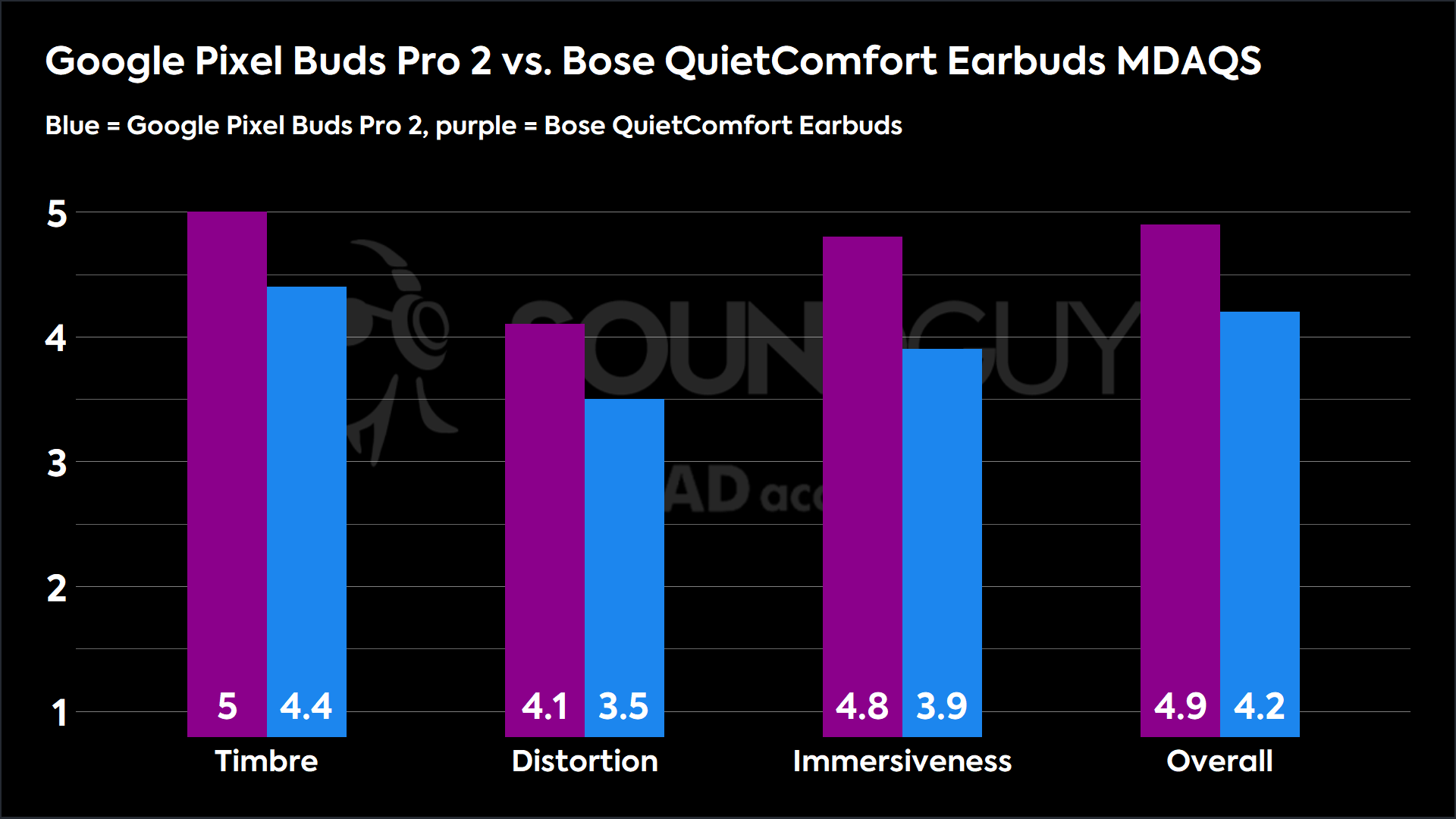
According to our simulated panel of a couple hundred listeners, most people will prefer the sound of the Bose QuietComfort Earbuds (2024) to that of the Google Pixel Buds Pro 2. Though the difference in overall mean opinion scores (MOS) isn’t huge, it’s a good signpost if you’re looking for audio quality over anything else. However, it’s entirely possible that you, personally, will prefer the sound of the Google Pixel Buds Pro 2 over the Bose QuietComfort Earbuds (2024), as the most noticeable difference between the sounds is a more reasonable bass level. That’s why we caution you to keep reading rather than take this one data point as gospel.
Objective Measurements
Loading chart ...
When measured against our preference curve, both sets of earbuds have something to offer different people. The Google Pixel Buds Pro 2, for example, has much less emphasis on bass than the Bose QuietComfort Earbuds (2024) does. Additionally, the Bose earbuds also have a bit more emphasis at 3, 8, and 12.6kHz than the Google Pixel Buds Pro 2, which could get a little grating over time if you listen loudly.
Beyond that, the main point of interest is the very notable difference in the shape of the responses. With significantly more bass and treble, you may find that mids appear to be less loud than you’re hoping. Though the in-app/OS EQ offers a 5-band slider for both earbuds, it might not have the granularity you’re hoping for in order to get the results you desire.
Finally, each set of earbuds has an array of EQ presets to choose from if you don’t like the stock tuning. Be sure to check out the reviews of each set of earbuds to get a more exhaustive rundown.
Do the Google Pixel Buds Pro 2 or Bose QuietComfort Earbuds (2024) have a better microphone?
Both the Google Pixel Buds Pro 2 and Bose QuietComfort Earbuds (2024) seem to have decent enough microphones, though wind noise makes both struggle a bit. Still, you can compare for yourself below. Just remember that for best results, the Google Pixel Buds Pro 2 requires a Google Pixel 8 or newer, and the higher-bandwidth microphone options are limited to the phone app (for now).
Google Pixel Buds Pro 2 microphone demo (Ideal conditions):
Bose QuietComfort Earbuds (2024) microphone demo (Ideal conditions):
Google Pixel Buds Pro 2 microphone demo (Windy conditions):
Bose QuietComfort Earbuds (2024) microphone demo (Windy conditions):
How does the microphone sound to you?
Google Pixel Buds Pro 2 vs Bose QuietComfort Earbuds (2024): Price and availability
As both the Google Pixel Buds Pro 2 and Bose QuietComfort Earbuds (2024) are both products from some of the more popular tech manufacturers on the market, you should have zero trouble finding either online. However, the prices are a bit far apart. The Google Pixel Buds Pro 2 comes in at $229, while the Bose QuietComfort Earbuds (2024) comes in at $179. Fifty bucks isn’t exactly a small amount of money if you’re trying to get bang for your buck, so you’re going to have to make choices. The upside here is that both models, while not among the best ANC earbuds out there, are still really good.
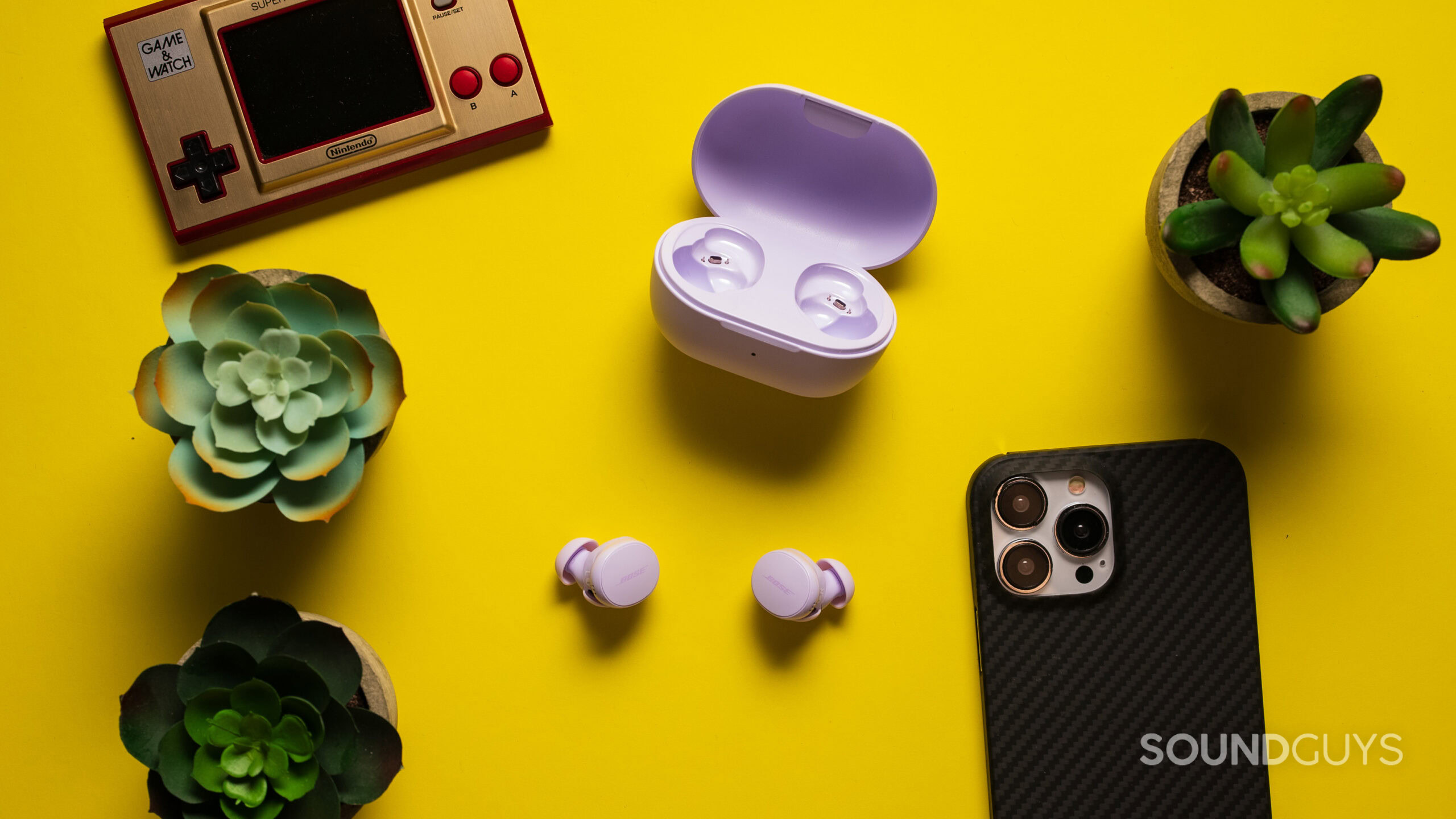
It’s possible you’ll be able to find either of these models discounted come the holidays, but typically earbuds don’t see cuts that deep until they’re at least a year old. As both of these are brand new, it’s possible that neither will see any stark price reductions outside of a trade-in program.
Should you get the Google Pixel Buds Pro 2 or Bose QuietComfort Earbuds (2024)?
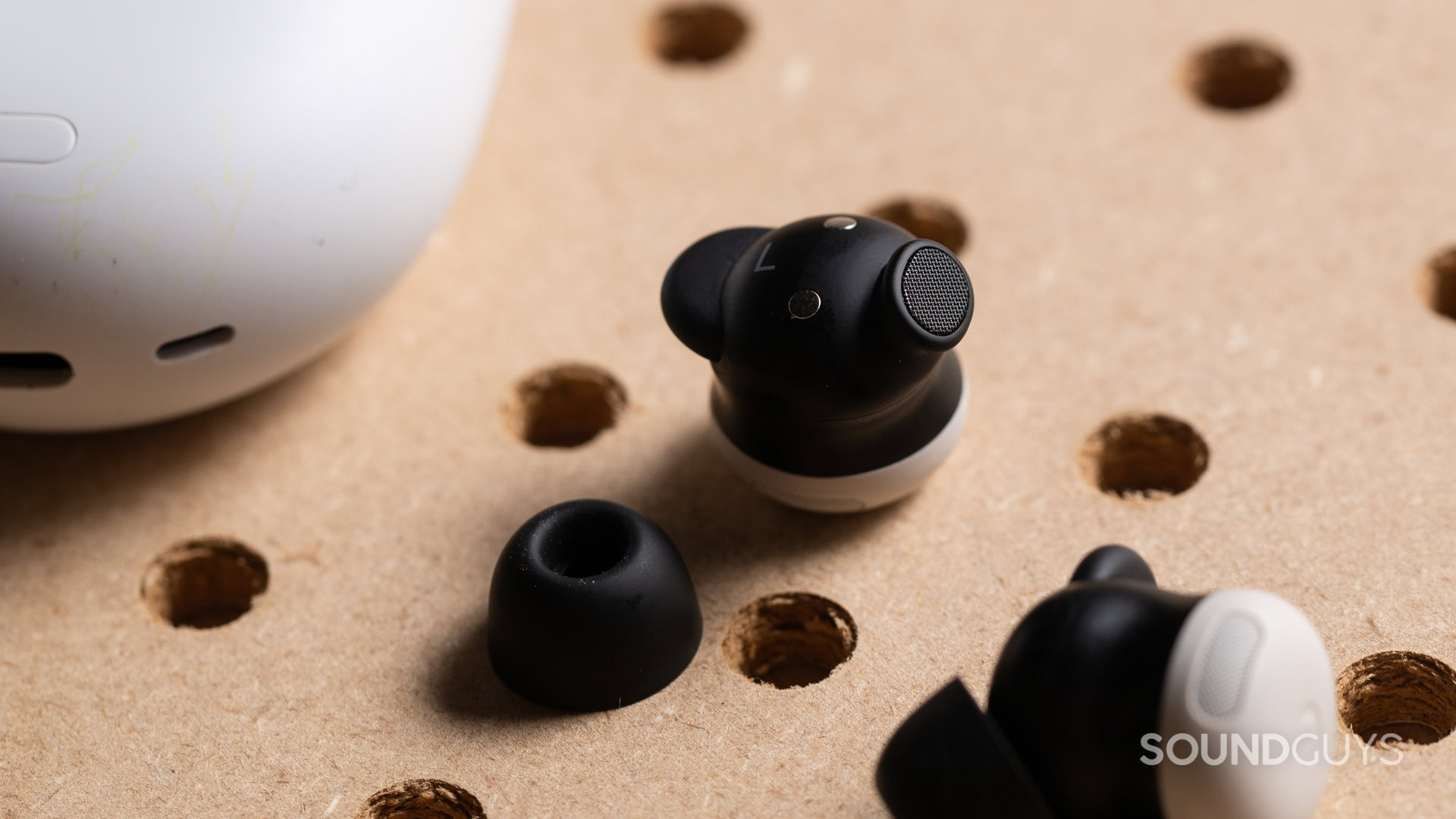
We predict that most people would be well served by either earbuds, but each offers a very different experience to the other. If you like smaller, lighter earbuds with less extreme swings in emphasis, or you own current Pixel phone, the Google Pixel Buds Pro 2 is for you. If you’re looking for the absolute most bang-for-buck and are fine with some absolute chonkers of earphones, the Bose QuietComfort Earbuds (2024) sound pretty good. It’s hard to go “wrong” here, but these are very different earbuds from each other.

Noise canceling
App with 5-band custom EQ
That said, the Google Pixel Buds Pro 2 will likely enjoy much more robust support from Google, as it wasn’t uncommon for the buds’ predecessors to adopt new features even close to the release of their replacements. Additionally, once Google mainstreams Auracast support, your earbuds will be more capable over time as constant companions rather than merely a vehicle for music.
Frequently asked questions
Yes.
Yes.
Both earbuds have a similar moisture resistance rating (IP54, IPX4, respectively).
Yes.
Yes, both devices support Multipoint.